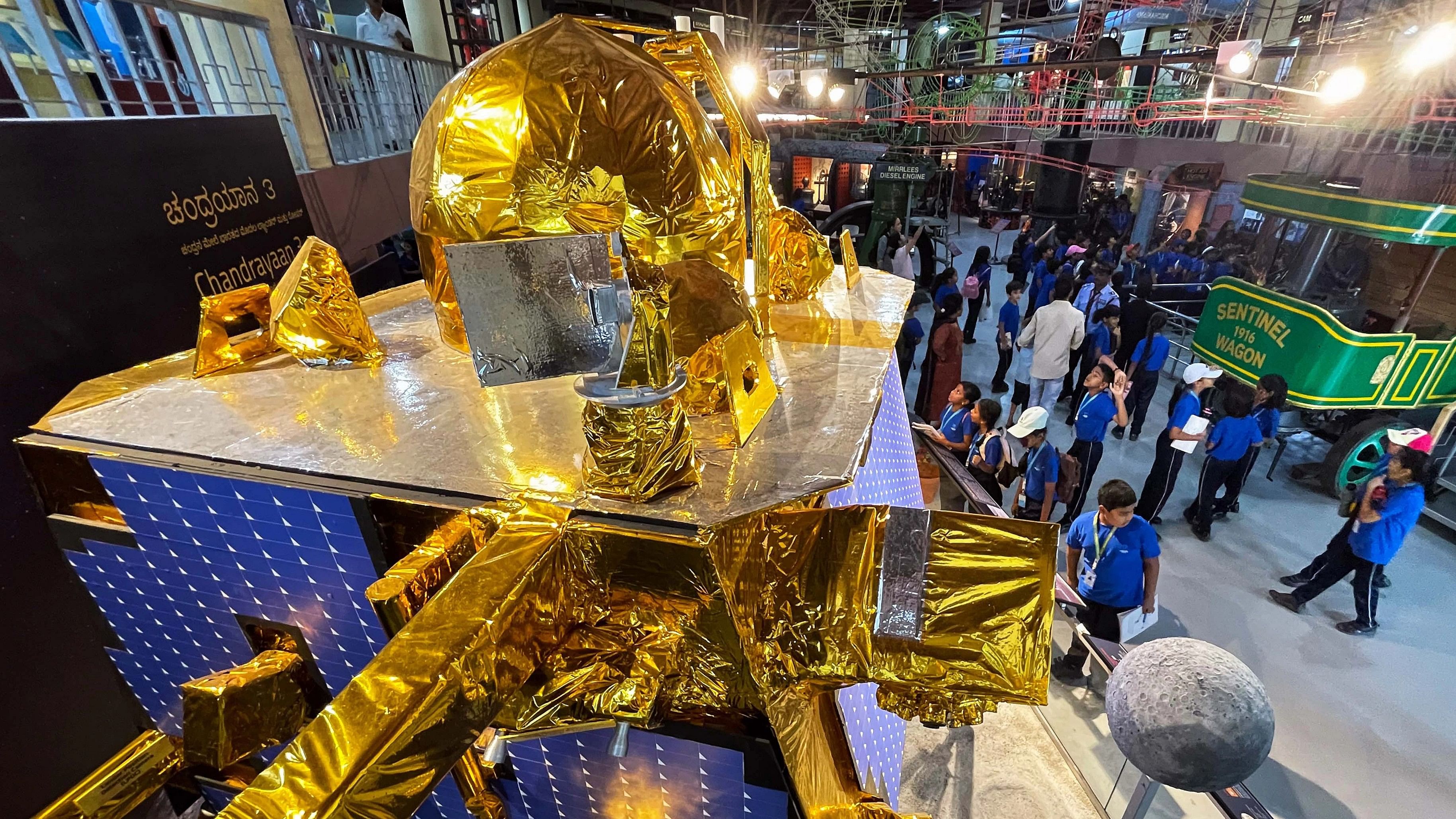
A full-scale model of Chandrayaan-3, developed by Isro, was inaugurated at Visvesvaraya Museum in Bengaluru on Thursday.
Credit: DH Photo/Pushkar V
Bengaluru: An atmosphere of exuberance pervaded Visvesvaraya Industrial and Technological Museum (VITM), on Thursday, after the full-scale model of Chandrayaan-3 - developed by Isro - was inaugurated there.
The honours were done by by Dr P Veeramuthuvel, project director of Chandrayaan-3.
M Vanitha, associate director of U R Rao Satellite Centre (URSC), Isro, and Nigar Shaji, programme director at URSC, were present.
Mounted on a surface resembling that of moon, the model is a real-size replica of the original Chandrayaan-3.
It is accompanied by a video presentation chronicling Isro's journey from the days of Chandrayaan-1 and a model of the moon showing the point of the module's landing. The model virtually recreates the space atmosphere in normal setting.
Speaking on the occasion, K A Sadhana, director of VITM, said the model reached the museum on October 10 - last day of International Space Week (October 4-10).
"Though the model was ready, it took time to create a replica of the moon's surface, a circular model of the moon and a cover that prevents onlookers from touching the model. That meant a lot of work which ended only yesterday night," she said.
Vanitha, who was project director of Chandrayaan-2, spoke of how the earlier project, even though unsuccessful, provided food for thought and helped its successor.
"The Orbiter High Resolution Camera payload on Chandrayaan-2 had the highest resolution camera to date. It gave us pertinent information about where the module could have landed, along with data about different elements on moon," she said.
Recalling that the work on Chandrayaan-2 began in 2013, Veeramuthuvel said the orbiter used during Chandrayaan-2, designed for just a year, had surpassed all expectations by functioning even after 4 years.
"After rectifying shortcomings of previous mission, we were ready for all eventualities for Chandrayaan-3. Everything went as per plan in the 19 minutes," he said.
Pointing out that developed countries like USA and Russia had taken 4 and 11 attempts respectively, before succeeding, Veeramuthuvel said hard work is irreplaceable and due diligence is necessary for success.
The programme was then witness to a plethora of questions from the audience, mostly consisting of school students who had flocked the museum. Answering a question, Veeramuthuvel reminded the audience that Isro has announced its man-to-moon mission, to be completed by 2040.